U.S. Supreme Court Building
Introduction
Text-to-speech Audio
Images
The U.S. Supreme Court building houses the nation's highest federal court and was completed in 1935.
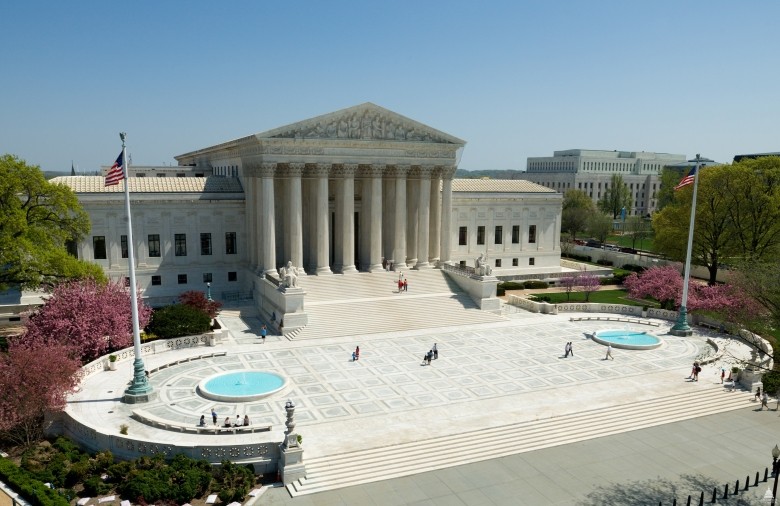
The Supreme Court Building declares "Equal Justice Under Law," with images of Liberty, Roman soldiers representing Order and Authority, architect Cass Gilbert, and other political figures.
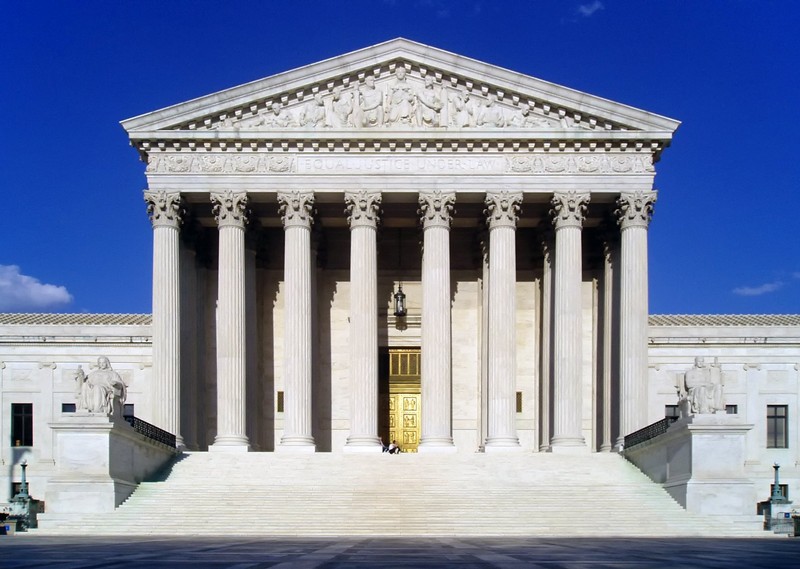
The first statue is placed outside the Supreme Court Building. Photo by Harris and Ewing, 1935, Library of Congress.
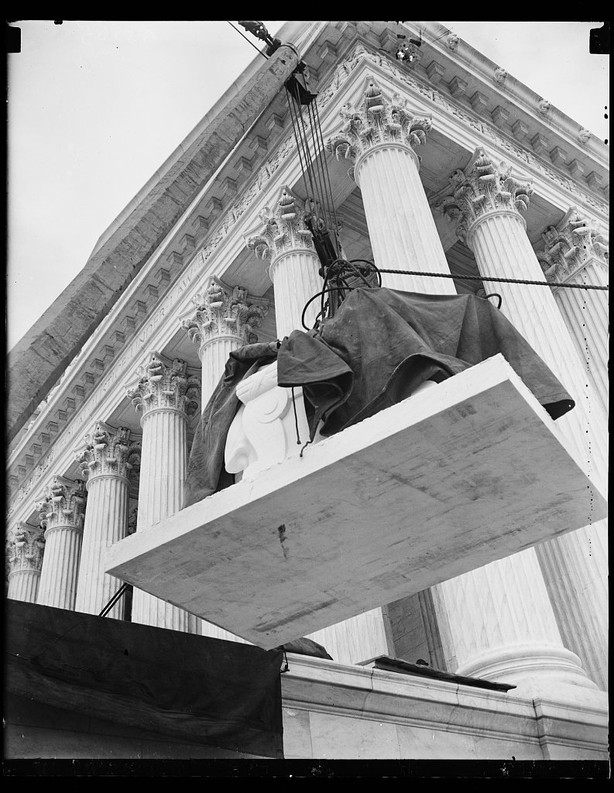
First exclusive picture in new Supreme Court building including members of the United States Supreme Court Advisory Committee. Photo by Harris and Ewing, 1935, Library of Congress.
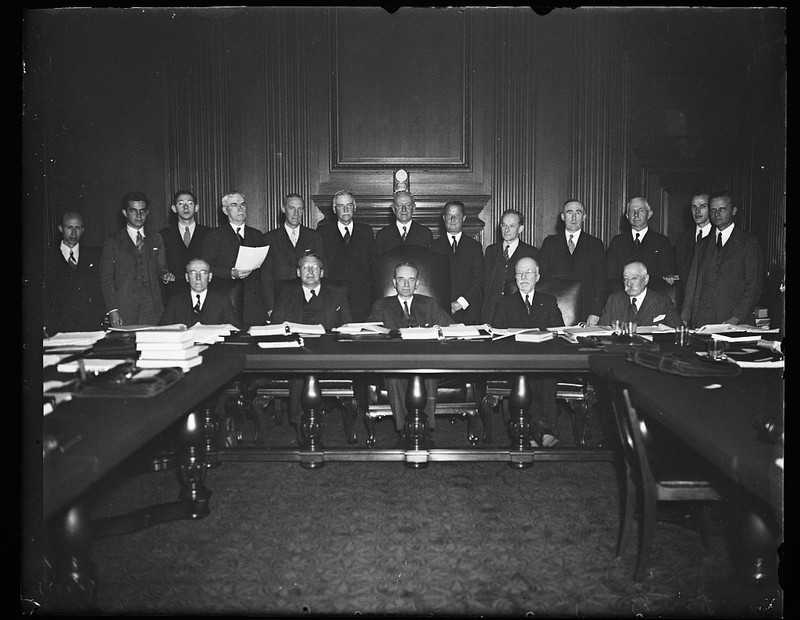
The Supreme Court in 1935, the year of its completion. It heard its first cases that fall.
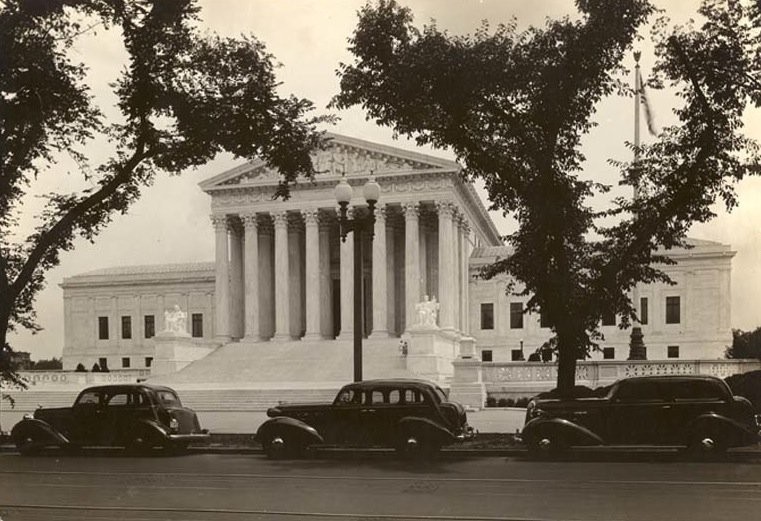
Official seal of the Supreme Court.
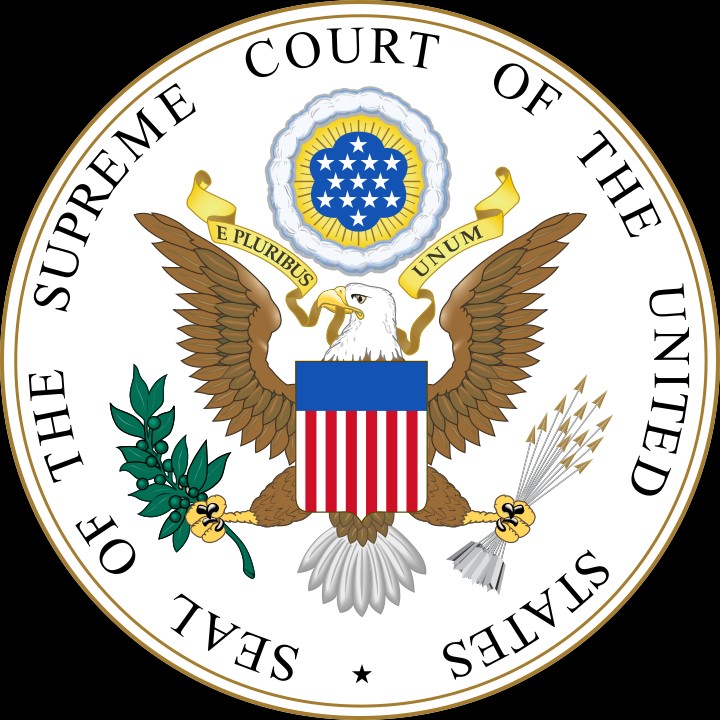
Learn more about the Supreme Court with this work from Oxford University Press-click the link below to learn more about this book.
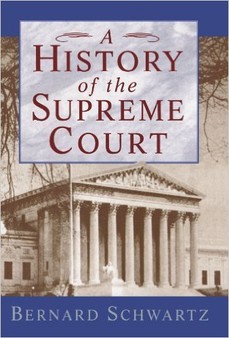
Backstory and Context
Text-to-speech Audio
The United States Supreme Court was established by the Judiciary Act of 1789, the first bill introduced by the United States Senate. It was to be situated in the nation’s capital, which was formally established in Washington, D.C. until the Residence Act of 1790. However, the Supreme Court did not move to Washington, D.C. until 1800. Until then, the Supreme Court met in the Merchants Exchange Building in New York City and in Philadelphia’s Independence Hall and City Hall. Once in Washington, D.C., the Supreme Court was situated in the United States Capitol Building, where over the next century and a half, they would move chambers six times. Most notably, the Supreme Court was located in the Old Supreme Court Chamber from 1819 to 1860 and the Old Senate Chamber from 1860 to 1935. It took 146 years for it to become reality, but in 1935, the Supreme Court received its own home in a beautiful, neoclassical building on First Avenue.
It was Chief Justice William Howard Taft, former United States President from 1909 to 1913, who convinced Congress that the Supreme Court needed its own building, which was authorized in 1925. Taft chose his old friend and distinguished architect Cass Gilbert to design the building. Gilbert designed the Woolworth Building in New York and Washington, D.C.’s Treasury Annex Building, U.S. Chamber of Commerce Building, and First Division Monument. At the age of 70, Gilbert embarked on one of his most important projects. The Supreme Court Building, like the Jefferson Memorial, Lincoln Memorial, and National Archives, featured neoclassical architecture. Its symmetry, large columnns, marble, statues, bas-relief panels depicting the history of law, and open space referenced ancient Greek and Roman structures that once housed systems of government and democracy the United States also embodied. Gilbert designed an imposing structure that asserted the powers of law and justice.
Gilbert advocated for the Supreme Court Building to be situated on Capitol Hill within close proximity to Union Station and a variety of federal buildings. This site had originally been occupied by the “Brick Capitol,” built as a temporary space for Congress after the Capitol Building suffered fire damage in the War of 1812. From 1815 to 1928, the Brick Capitol served a number of other purposes, including a lodge for visitors, a public school, a federal military prison, and headquarters for the National Woman’s Party. Once the site was selected for the Supreme Court Building, the National Woman’s Party opposed destruction of their historic building, though D.C. eventually paid the National Woman’s Party a large sum of money to relocate in order to acquire the property.
The United States Supreme Court Building held its first session in the fall of 1935, in which they debated New Deal-era projects. Their first decision, United States v. Butler et al., killed the Agricultural Adjustment Act, which, according to one historian, “replaced the Capitol and the White House as the political storm center of the nation.”1 Since then, the Supreme Court Building has heard cases related to fundamental topics including civil rights, healthcare, environmental protection, right to privacy, censorship, and the five freedoms of the First Amendment: religion, speech, press, assembly, and petition.
The United States Supreme Court is part of the Judicial Branch, one of three branches of the United States government. Initially, the Supreme Court consisted of one Chief Justice and five Associate Judges, though over time, this number has fluctuated. Today, the U.S. Supreme Court consists of the Chief Justice of the United States and eight Associate Justices. The President of the United States nominates Justices and appointments are made with the advice and consent of the Senate. Justices are appointed for life and only leave the position by death, retirement, or impeachment. No Justice has ever been impeached. The Supreme Court hears 100 to 150 of the 7,000 cases filed each year. Most are requesting the Supreme Court review decisions made by the U.S. Court of Appeals or district courts, while others are original jurisdiction cases and cases from the state courts. Deciding which case to take is, according to a court historian, According to a court historian, "arguably the most important stage in the entire Supreme Court process."2
If you’re visiting the Supreme Court Building, you’ll want to explore the exhibitions that delve into the history of the Supreme Court. These are located on the ground floor and highlight the work of the Court, the lives of the Justices, and the architecture of the building. Look for the millions of dollars’ worth of marble used in the construction and the American quartered white oak wood that is used in the trim, the walls and some parts of the floor. Look for the many sculptures that depict real and allegorical figures.
Sources
1. Blodgett, “Cass Gilbert, Architect,” 635.
2. Supreme Court Historical Society. “How the Court Works.”
Blodgett, Geoffrey. "Cass Gilbert, Architect: Conservative at Bay." The Journal of American History 72, no. 3 (1985): 615-36. www.jstor.org/stable/1904306
Burton, Harold H., and Thomas E. Waggaman. "The Story of the Place: Where First and A Streets Formerly Met at What Is Now the Site of the Supreme Court Building." Records of the Columbia Historical Society, Washington, D.C. 51/52 (1951): 138-47. http://www.jstor.org/stable/40067303
Goode, James M. Washington Sculpture: A Cultural History of Outdoor Sculpture in the Nation's Capital. Baltimore: Johns Hopkins University Press, 2008.
Supreme Court Historical Society. “History of the Court.” Accessed October 2017. http://supremecourthistory.org/history-of-the-court/
Supreme
Court Historical Society. “How the Court Works.” Accessed October 2017. http://supremecourthistory.org/htcw_casesthecourthears.html
United States Courts. “Supreme Court Landmarks.”
United States Courts. Accessed October 2017. http://www.uscourts.gov/about-federal-courts/educational-resources/supreme-court-landmarks
United States Supreme Court. "History and Traditions." United States Supreme Court. Accessed October 2017. https://www.supremecourt.gov/about/historyandtraditions.aspx
United States Supreme Court. "The Supreme Court Building." United States Supreme Court. Accessed October 2017. https://www.supremecourt.gov/about/courtbuilding.aspx
Images:
“West front of the Supreme Court building.” Photo. 2008. Photo by UpstateNYer. Wikimedia Commons. https://commons.wikimedia.org/wiki/Supreme_Court_of_the_United_States#/media/File:USSupremeCourtWestFacade.JPG
“Statue hoisting.” Photo. November 6, 1935. Harris and Ewing. Library of Congress Prints and Photographs Division Washington, D.C. https://www.loc.gov/item/hec2013009632/
“First exclusive picture in new Supreme Court building.” Photo. 1935. Harris and Ewing. Library of Congress Prints and Photographs Division Washington, D.C https://www.loc.gov/item/hec2013009666/
“View of the Supreme Court Building in 1935.” Photo. 1935. Wikimedia Commons. https://en.wikipedia.org/wiki/United_States_Supreme_Court_Building#/media/File:SupremeCourt-1935.jpg
